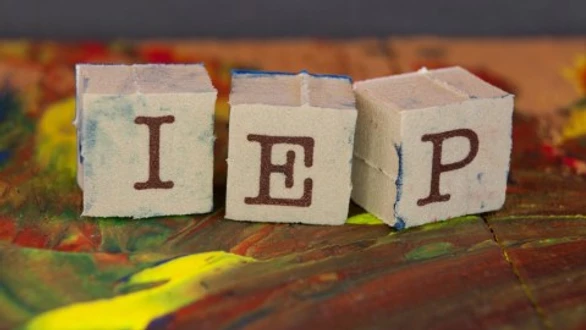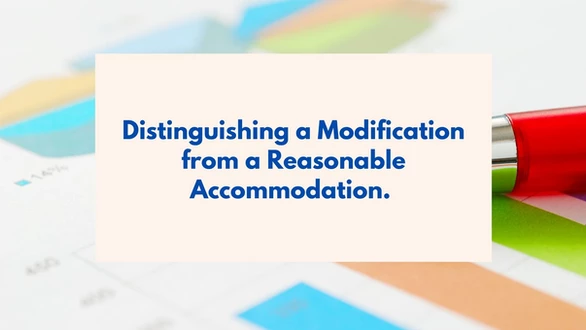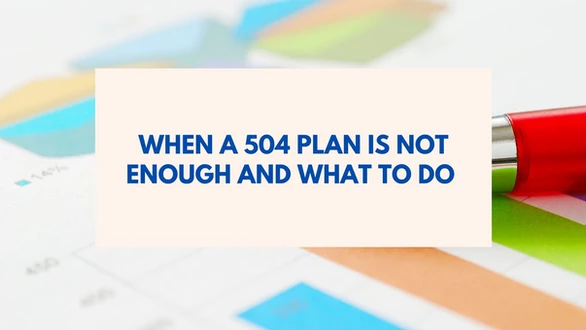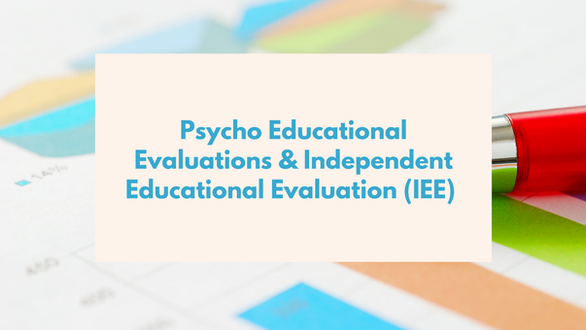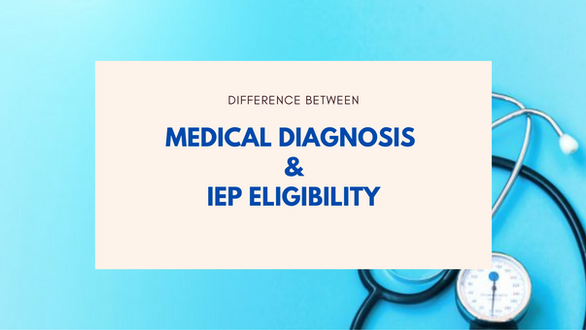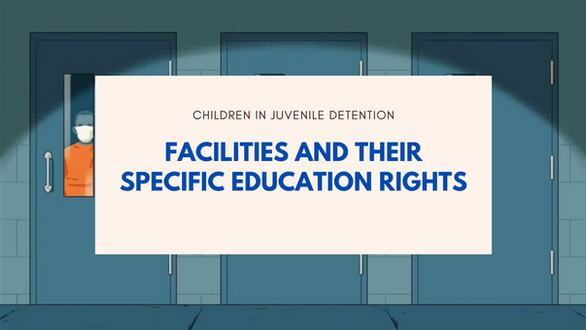Familiarizing yourself with terminology used in K-12 education can help make the process of arranging accommodations and services for students with disabilities easier.
Not all students who have disabilities require specialized instruction. For students with disabilities who do require specialized instruction, the Individuals with Disabilities Education Act (IDEA) controls the procedural requirements, and how an IEP is developed. The IDEA process is more involved than that of Section 504 of the Rehabilitation Act and requires documentation of measurable growth.
For students with disabilities who do not require specialized instruction but need the assurance that they will receive equal access to public education and services, a document is created to outline their specific accessibility requirements. Students with 504 Plans do not require specialized instruction, but, like the IEP, a 504 Plan should be updated annually to ensure that the student is receiving the most effective accommodations for his/her specific circumstances.
Both Individualized Education Programs (IEPs) and 504 plans can offer formal help for K–12 students who are struggling in school. They’re similar in some ways but very different in others. This article compares them side-by-side to help you understand the differences. But before that, let us define both terms.
IEP Defined
The Individualized Educational Plan (IEP) is a plan or program developed to ensure that a child who has a disability identified under the law and is attending an elementary or secondary educational institution receives specialized instruction and related services.
In the United States, each public school child who receives special education services must have an Individualized Education Program (IEP). This is mandated by the Individuals with Disabilities Education Act (IDEA). Special education services are provided at no cost to students and states receive federal funding for each IDEA eligible student.
An IEP creates an opportunity for teachers, parents, school administrators, related professionals, and students (when appropriate) to work together to identify goals and improve outcomes for students with disabilities.
To qualify for an IEP, a child’s disability must have an adverse effect on his/her educational progress.
504 Plans Defined
The 504 Plan is a plan developed to ensure that a child who has a disability identified under the law and is attending an elementary or secondary educational institution receives accommodations that will ensure their academic success and access to the learning environment.
504 plans get their name from Section 504 of the Rehabilitation Act of 1973, a broad civil rights law that prohibits discrimination against individuals with disabilities in any agency, school, or institution receiving federal funds.
Section 504 requires schools to eliminate barriers that would prevent a student from participating fully in the programs and services offered in the general curriculum by providing reasonable accommodations. Those accommodations may be documented in a plan called a 504 plan.
DIFFERENCE BETWEEN A SECTION 504 PLAN AND AN IEP
Both IEPs and 504 plans are intended to ensure that students with disabilities have equal access to education.
The major difference is: IEPs are developed for students who receive specialized instruction. 504 plans are for students who have accessibility requirements (e.g., extended time for tests and assignments, large print classroom materials, etc.), but do not require specialized instruction, and do not qualify for special education programs under IDEA. For those students, the school district’s 504 coordinator may be an excellent resource throughout the process of placing and supporting a student with a disability in his or her U.S. host school. A 504 is not a consolation prize for not receiving an IEP.
This table compares them side-by-side to help you understand the differences.
THE OBLIGATION OF PRIVATE SCHOOLS
Generally speaking, private schools are not covered under IDEA, the special education law.
If a public school places a child with an IEP in a non-public school as a part of the IEP or a legal settlement, then the public school remains responsible for ensuring that the private school implements.
Children who attend public schools are entitled to a free appropriate education and an IEP, and they receive funding from the federal government. Private schools do not receive this funding and are not required to provide a free appropriate education or an IEP. They are not required to provide special education services to children with disabilities.
THE LAW WHEN THERE IS NO FEDERAL FUNDING
504 and IDEA Laws
If a private school does not receive federal funding, Section 504 and IDEA laws are applied differently.
• In a private school Section 504 requires that these schools must merely provide “minor adjustments” for students with disabilities. There is no general standard for a minor adjustment. Additionally, courts tend to look at potential administrative burden, expense and related factors of the requested adjustments. In short, the 504 requirements imposed on these schools are minimal.
• Even if your child attends private school you can request an evaluation based on IDEA law that will be paid by the public school district you live in. If your child qualifies for an individualized education plan (IEP) and you keep your child at the private school, he or she may get what’s called “equitable services.” These services are paid by public funding set aside for students with disabilities whose parents place them in private school. These funds are limited, so students might receive fewer, or no, free services if they attend private school.
Americans With Disabilities Act
The ADA offers a minimal protection to children with disabilities in private schools that do not receive federal funds. The ADA does not contain specific special education rules or requirements, but Title III of the ADA prohibits discrimination by public accommodations. That includes private businesses that offer goods and services to the public. They must make reasonable modifications in policies, practices and procedures that deny access to individuals with disabilities, and provide aids, such as, note takers or readers when necessary, unless it would cause an undue burden on the private institution.
However, Title III does not cover religious institutions; so, private schools which are directly operated by religious institutions are not covered by this requirement. You will need to contact the Office of Civil Rights in your state’s department of education or the U.S. department of education to file an ADA-related complaint.
CONCLUSION
Whether a child has an IEP or 504 plan, or receives accommodations more informally, advance planning is key to ensuring that necessary services will be in place as close to the start of the school year as possible.

